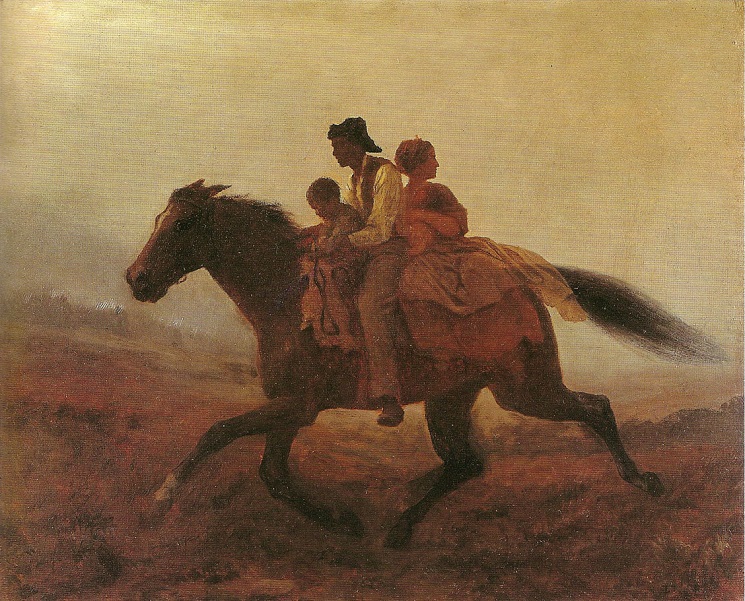
Viola Müller <Viola.Muller@eui.eu>, Utrecht University (The Netherlands)
Introduction
Slavery in the United States was already the focus of academic discussions during its existence. After its abolition in 1865, the historical study of American slavery was dominated by “plantation nostalgia,” a school of thought portraying the Old South as a harmonious society of paternalistic slaveholders and grateful slaves. This overall perspective was dominant in the late-nineteenth and twentieth centuries.
After the 1960s, common scholarly opinion on American slavery had reached the point of acknowledging that slavery was a cruel system holding people in bondage and fear, denying them their rights as human beings, and degrading them to the level of property. By far the greater number of contributions dealt with the economic side of slavery and any social histories tended almost exclusively to be top-down, stressing the structural conditions of the system. Well into the 1970s, slavery was regarded as a unilaterally defined relationship between master and slave, and agency by enslaved women and men was constantly downplayed or neglected.
The attention slavery received from the 1980s onwards, as a key part of American history, was intensified by a general interest in resistance and the agency of oppressed people. The field of American slavery depended on the contributions of the interdisciplinary currents of postcolonial studies, history from below, and subaltern theory to incorporate resistance as an integral element. The background to this was that active insurgency by enslaved people in the United States had been relatively rare compared to the more extensive revolts that had taken place in the Caribbean, and which had a powerful impact. However, scholarship came increasingly to understand that resistance did not necessarily take the form of open violence but could occur in numerous different ways.
Selected Literature
In 1943, Herbert Aptheker laid the cornerstone for the subsequent studies of slave revolts, one of the most visible and violent forms of resistance to the working and living conditions of slavery. In the 1970s, John Blassingame and Gerald Mullin pioneered a new trend when they recognized the relevance of running away as a powerful tool of resistance to slavery. Alongside other revisionist historians, these scholars also argued that people in bondage possessed considerable (yet limited) agency and they shifted the attention from masters to slaves as protagonists of their narratives.
Shortly after, scholars came to place the act of running away within a broader framework of resistance, which can be understood as fighting against one’s own enslavement, against the institution of slavery, or for the improvement of one’s condition within the system. Theft, inefficient work, shirking, temporary absconding, simulating sickness, arson, murder, infanticide, suicide, and open revolt were all now seen as forms of resistance. The most common ways of resistance were related to work and the struggle to negotiate working conditions. This perspective is, for instance, explored by James Oakes and, with a special focus on women and mobility, by Stephanie Camp.
Running away as resistance can take various forms. To give a few examples, John Hope Franklin and Loren Schweninger devoted a book-length study to enslaved people who absconded temporarily from their legal owners. Sylviane Diouf’s book revolves around maroons in the nineteenth century, who lived in wilderness areas yet were in constant contact with white people on the basis of work agreements and trade. For a study that shows how the working conditions of enslaved people were crucial in determining the forms and outcome of resistance, consult David Cecelski’s work on enslaved maritime workers. One of the geographically and conceptually most comprehensive contributions on slave flight in recent years is Damian Pargas’ collective volume on fugitive slaves on the North American continent.
As is apparent, many of the forms of resistance mentioned here are not unique to the system of (American) slavery and can be found in other forms of coerced labor. For a connecting conceptual contribution, see the work of political scientist James Scott.
List of Literature Cited
Aptheker, Herbert. American Negro Slave Revolts. New York: Columbia University Press, 1943.
Blassingame, John W. The Slave Community: Plantation Life in the Antebellum South. Oxford and New York: Oxford University Press, 1972.
Camp, Stephanie M. H. Closer to Freedom: Enslaved Women and Everyday Resistance in the Plantation South. Chapel Hill: University of North Carolina Press, 2004.
Cecelski, David S. The Waterman’s Song. Slavery and Freedom in Maritime North Carolina. Chapel Hill: University of North Carolina Press, 2001.
Diouf, Sylviane A. Slavery’s Exiles: The Story of the American Maroons. New York and London: New York University Press, 2014.
Franklin, John Hope, and Loren Schweninger. Runaway Slaves: Rebels on the Plantation. Oxford and London: Oxford University Press, 1999.
Mullin, Gerald W. Flight and Rebellion: Slave Resistance in Eighteenth-Century Virginia. Oxford and New York: Oxford University Press, 1972.
Pargas, Damian (ed.). Fugitive Slaves and Spaces of Freedom in North America. Gainesville: University Press of Florida, 2018.
Oakes, James. Slavery and Freedom: An Interpretation of the Old South. New York: Alfred A. Knopf, 1990.
Scott, James C. Dominance and the Arts of Resistance: Hidden Transcripts. New Haven: Yale University Press, 1990.
